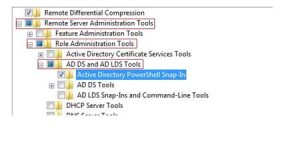How Will Windows 7 Install Active Directory Users And Computers?



Active Directory keeps a track record of all the user Ids and passwords used on the computer. It saves all the Ids and passwords in a protected zone improving the security. No edition of Windows 7 has got active directory, so to get it, we have to download and install the application.

To install the Active directory on Windows 7, there are direct links available on the Internet for the purpose. We need to assure the safest download. Also, the website related to Microsoft will provide us with this facility. It is a long process to download and install active directory from www.microsoft.com. One can refer to the videos on YouTube for a successful installation.



Active Directory is the trademark directory service of Microsoft and is a vital component of the Windows 2000 architecture. Similar to other directory services like the NDS or the Novell Directory Services, Active Directory is a standardized and centralized system that automates network management of user data, distributed services, and security. It also allows interoperation with other directories. It is specifically designed for distributed networking environments.
It was built to be both backward compatible and forward compatible. It supports LDAP or the Lightweight Directory Access Protocol to allow inter-directory operability. It is an object-oriented storage organization allowing users to easily access information. It also supports hierarchical organization which offers a single point of access system administration like management of user accounts, applications, servers, and clients to lessen errors and redundancy.
